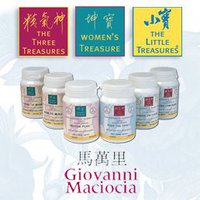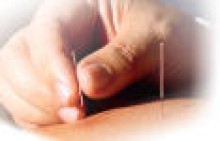Shop News
-
25/11/2025Ganoderma Benefits
-
07/02/2025Colds & Flu - treatment and prevention
-
24/01/2025Ginseng - Nature's anti-inflammatory
-
23/01/2025Curcumin Benefits
-
02/05/2024Allergies Tradicional Chinese Medicine
-
12/03/2024Food Combining and Chinese Medicine
-
23/08/2023Phytoestrogens
-
05/06/2023Ginseng Benefits
-
02/06/2023Aumento de precios de la marca Blue Poppy
-
20/07/2022Infertility and Chinese Medicine
-
10/05/2022Allergic Rhinitis
-
24/03/2022TCM Obesity and Its Causes
-
23/03/2022Cancer Prevention and Diet
-
26/01/2022Medicinal Mushrooms
-
18/12/2021Christmas Remedies
-
09/07/2021CANDIDIASIS
-
03/03/2021Chinese Herbal Medicine formula studied to improve cancer therapy
-
12/01/2021The benefits of Xiao Yao San
-
15/09/2020Coronavirus Protocol (summary)
-
01/06/2020TCM Principles for Weight Loss
-
12/02/2020Take Good Care of Your Qi
-
01/01/2020Cordyceps Sinensis Benefits
-
01/12/2019Prevention & Treatment of Colds & Flu
-
27/04/2019ANXIETY - causes and treatments
-
26/03/2019Prostatitis and Chinese Herbs
-
01/03/2019What is an Adaptogenic Herb?
-
05/02/2019New Jade Herbal Formulas
-
09/12/2018The Shen of the Heart
-
23/08/2018Hyperthyroidism and Hypothyroidism
-
05/07/2018FOCUS ON A REMEDY: WARM THE MENSES
-
04/04/2018Treating Insomnia With Chinese Herbal Medicine
-
25/03/2018Cordyceps Sinensis research
-
01/03/2018Chinese Herbal Medicine for Panic Attacks
-
17/01/2018Clinical application of the Clear Metal remedy for advanced stage of influenza
-
07/11/2017BI SYNDROME
-
01/09/2017Chemotherapy and Anti-Oxidants
-
05/03/2017Lumbar Disc Herniation
-
31/01/2017Treatment Principles in Exterior Invasions
-
21/10/2016Healthy Aging and Oriental Medicine: Qi is the secret
-
23/09/2016Horny Goat's Weed Benefits
-
23/07/2016FOCUS ON A REMEDY: PROSPEROUS EARTH
-
25/06/2016Ginkgo Biloba Benefits
-
23/03/2016Blood Stasis
-
23/02/2016FOCUS ON A REMEDY: PROSPEROUS EARTH
-
23/01/2016CHRONIC FATIGUE SYNDROME
-
28/12/2015TONICS
-
24/10/2015A CASE HISTORY OF CHRONIC BRONCHITIS
-
23/09/2015Ganoderma Lucidum reduces obesity in mice
-
01/07/2015The Five Elements and Diet in Chinese Medicine
-
23/05/2015Daoist Sexual Practices
-
21/02/2015DEPRESSION
-
22/01/2015GLAUCOMA
-
20/12/2014ENDOMETRIOSIS
-
28/11/2014POLYCYSTIC OVARY SYNDROME
-
21/08/2014Ear infections and antibiotics
-
24/06/2014FOCUS ON A REMEDY: CHEMO-SUPPORT
-
21/03/2014Stomach-Yin Deficiency and Jade Spring
-
21/02/2014JOY, AN EMOTIONAL CAUSE OF DISEASE?
-
17/01/2014SEXUAL LIFE IN CHINESE MEDICINE
-
19/12/2013ON STAGNATION OF LUNG- AND HEART-QI
-
14/11/2013THREE TREASURES REMEDIES FOR PAIN
-
23/10/2013HEADACHE CASE HISTORY
-
12/07/2013Giovanni Maciocia Clinical Tip: Arouse Power
-
19/04/2013Case history - Chronic constipation
-
31/01/2013Recurrent Bronchitis: a case history
-
31/12/2012FOCUS ON A REMEDY: SOOTHE THE SHEN
-
18/06/2012Herbs for the treatment of Anorexia
-
09/05/2012Three Treasures & Women's Treasures now available
-
09/04/2012REMEDY OF THE MONTH: CLEAR YANG
-
02/07/2011New Pediatric Formulas
-
28/04/2011Lingzhi slows progress of Alzheimer’s
-
18/10/2010European Legislation for natural products
-
19/09/2010700-year-old Chinese medicine can treat depression...
-
01/09/2009Swine Flue
This article is dedicated to the discussion of the remedy Chemo-Support which is intended to minimize the side effects of chemotherapy. This remedy was formulated 15 years ago and it has been used by many patients undergoing chemotherapy.
CHEMOTHERAPY SIDE-EFFECTS FROM THE POINT OF VIEW OF CHINESE MEDICINE
If we analyze the side-effects or chemotherapy, there are important differences between various cytotoxic drugs and one could conceivably formulate an individual Chinese herbal formula for each. However, one can identify common characteristics among the above side-effects. We can attempt to group the side-effects according to the Chinese pathological pattern induced by the various cytotoxic drugs. Looking at the side-effects of each drug, four patterns in particular stand out:
1. DEFICIENCY OF QI, BLOOD AND YIN
Hair loss, diarrhoea, nail ridging, bone-marrow suppression, malaise, fatigue, depression, loss of appetite, neurological damage, dizziness, constipation, numbness, tingling, paraesthesia of hands and feet.
2. ST-QI REBELLING UPWARDS
Nausea, vomiting.
3. STOMACH HEAT
Mouth ulcers, stomatitis, stomach ulcers.
4. BLOOD HEAT
Haematuria, fever, skin reactions, cystitis.
Thus, we can deduce from the analysis of the above patterns that cytotoxic drugs cause the following:
1. Qi, Blood and Yin deficiency (of Stomach, Lungs, Liver and Kidneys)
2. Stomach-Qi rebelling upwards
3. Stomach Heat
4. Blood Heat.
The treatment principles to adopt are therefore (the herbs used are indicated in brackets):
Tonify Qi, Blood and Yin (Huang Qi Radix Astragali, Ren Shen Radix Ginseng, Ling Zhi Ganodermae, Mai Men Dong Radix Ophiopogonis, Dang Gui Radix Angelicae sinensis, Nu Zhen Zi Fructus Ligustri lucidi, Huang Jing Rhizoma Polygonati)
Subdue rebellious Stomach-Qi (Lu Gen Rhizoma Phragmitis, Ban Xia Rhizoma Pinelliae preparatum, Sha Ren Fructus Amomi)
Clear Stomach Heat (Lu Gen Rhizoma Phragmitis, Zhi Mu Radix Anemarrhenae)
Cool Blood (Mu Dan Pi Cortex Moutan)
ANALYSIS OF INDIVIDUAL HERBS IN CHEMO-SUPPORT
- Huang Qi Radix Astragali: tonify Qi and raise immune response.
- Ren Shen Radix Ginseng: tonify Qi.
- Ling Zhi Ganodermae: tonify Qi and Blood and raise the immune response.
- Mu Dan Pi Cortex Moutan: cool Blood.
- Zhi Mu Radix Anemarrhenae: clear Heat.
- Fu Ling Poria: resolve Dampness.
- Chen Pi Pericarpium Citri reticulatae: resolve Dampness, stop nausea.
- Mai Men Dong Radix Ophiopogonis : nourish Yin.
- Dang Gui Radix Angelicae sinensis: nourish Blood
- Ban Xia Rhizoma Pinelliae preparatum: resolve Phlegm, subdue rebellious Stomach-Qi, stop nausea and vomiting.
- Lu Gen Rhizoma Phragmitis: clear Stomach-Heat, stop vomiting.
- Nu Zhen Zi Fructus Ligustri lucidi
- Sha Ren Fructus Amomi: move Qi, resolve Dampness, stop nausea.
- Huang Jing Rhizoma Polygonati: tonify Qi, nourish Yin and Jing.
- Gan Cao Radix Glycyrrhizae uralensis: harmonize.
DOSAGE AND PROTOCOL
Chemo-Support works better if it is started some time before the beginning of chemotherapy and continued for about two weeks after the end. It is important to note that “during the treatment” means during the course of treatment, i.e. also in the days of break from the treatment. The dosage is as follows:
- Two weeks before start of treatment: 2 tablets a day
- Four days before the start of treatment: 2 tablets twice a day
- During the treatment: 3 tablets three times a day
- After the end of the treatment for about 4 weeks: 2 tablets twice a day
It is best to take the tablets away from meals, i.e. about 1 hour before or after a meal, swallowed with hot water. The tablets should also be taken separately from other medication, at least 1 hour away. If the patient feels very nauseous and finds it difficult to swallow the tablets, these could be crushed and powdered, immersed in a small amount of hot water with three slices of fresh ginger and the water sipped slowly.
The dosage during treatment indicated above should be adjusted according to the severity of the side-effects and the above dosage could be reduced or increased.
If the patient is receiving both chemo- and radio-therapy and is taking both Chemo-Support and Radio-Support, the dosage of each should be reduced. Adjustments can be made according to the patient’s side-effects and timing of therapies in this situation by using a higher ratio of Chemo-Support during the days surrounding chemotherapy or when its side-effects are heightened. Similarly, the dosage of Radio-Support can be increased if the side-effects experienced from radiotherapy are more severe, or during the days surrounding the administration of radiotherapy.
Chemo-Support should be discontinued approximately four weeks after the end of the treatment when the condition should be reassessed and a different formula given. By contrast, Radio-Support should be continued for at least 6 weeks after the end of radiotherapy.
ACUPUNCTURE TREATMENT OF CHEMOTHERAPY SIDE EFFECTS
Acupuncture can be used to great effect, in conjunction with Chemo-Support to reduce the side-effects of chemotherapy. Indeed, acupuncture can complement the use of Chemo-Support by tailoring the treatment to the specific side-effects suffered by the patient. The following are suggested point combinations for specific symptoms and signs.
Fatigue
Ren-12 Zhongwan, ST-36 Zusanli, SP-6 Sanyinjiao, BL-20 Pishu, BL-21 Weishu.
Nausea, vomiting
Ren-13 Shangwan, P-6 Neiguan, ST-34 Liangqiu, ST-36 Zusanli. In addition to acupuncture, the following massage technique is very effective to combat nausea and vomiting: apply a massage oil liberally to the lower legs, make a loose fist with your hands, starting from ST-36, massage downwards along the Stomach channel using the knuckles of the index fingers all the way down to the ankle and then massage upwards along the Spleen channel using your thumbs. This technique harmonizes the ascending and descending of Stomach- and Spleen-Qi, stimulating Stomach-Qi to descend and Spleen-Qi to ascend.
Alopecia
BL-17 Geshu (with direct moxa cones), ST-36 Zusanli, SP-6 Sanyinjiao, LIV-8 Ququan, BL-20 Pishu, BL-23 Shenshu. Add Shou Wu Pian or Glorious Sea to Chemo-Support.
Myelo-suppression
BL-17 Geshu (with direct moxa cones), BL-11 Dashu (with direct moxa cones), BL-20 Pishu, BL-23 Shenshu.
Stomatitis, mouth ulcers
ST-44 Neiting, L.I.-4 Hegu, L.I.-11 Quchi.
Cystitis
Ren-3 Zhongji, BL-63 Jinmen, BL-28 Pangguangshu, BL-32 Ciliao, SP-9 Yinlingquan.
Fever
L.I.-11 Quchi, KI-2 Rangu, Du-14 Dazhui.
Skin rash
L.I.-11 Quchi, SP-10 Xuehai.
Diarrhoea
ST-25 Tianshu, ST-37 Shangjuxu.
BIBLIOGRAPHY
1) Perry M, Anderson C, Dorr V, Wilkes J, The Chemotherapy Sourcebook, Williams & Wilkins, Baltimore, Maryland, 1999.
2) Skeel R, Handbook of Cancer Chemotherapy, Williams & Wilkins, Baltimore, Maryland, 1999.
3) Zhu YP, Chinese Materia Medica, Harwood Academic Publishers, Amsterdam, 1998.
4) Bensky D and Gamble A, Chinese Herbal Medicine Materia Medica, Eastland Press, Seattle, 1993.
5) Chang H.M. and But P.P.Hay, Pharmacology and Applications of Chinese Materia Medica, World Scientific, Hong Kong, Vol. I, 1986.
6) Chen J K, Chen T T, Chinese Medical Herbology, Art of Medicine Press, City of Industry, CA, USA 2004.
By Giovanni Maciocia
